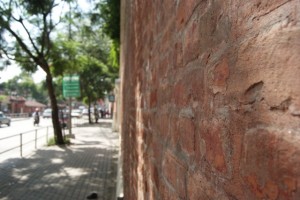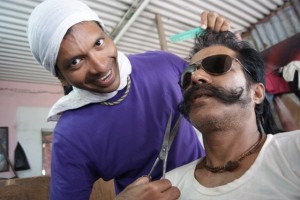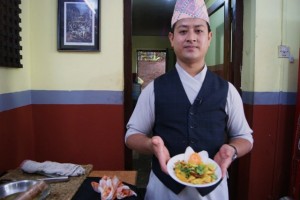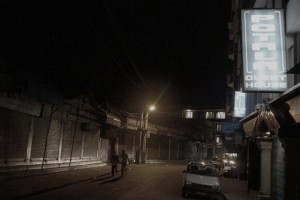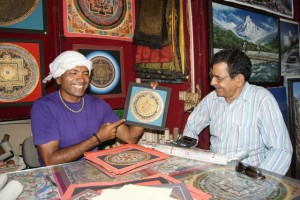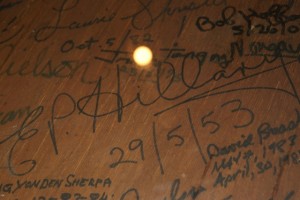In a country with over 60 ethnic groups, diversity of music is a given. Besides the usual suspects like rock, pop and classic, there are also many genres which are yet to be documented. Nepalis have rhythm in their genes and music and dance are integral to any celebration. People cut a rug not just during a celebration, even during family get-togethers as well. As testimony to this love for music are the numerous music shops that dot Thamel.
Named after the mountain in the hilarious account of an imaginary ascent, the Rum Doodle enjoys a fiercely loyal patronage among those high on adrenaline. What adds to the charm is that the summiteers of Everest are entitled to free food for a lifetime. Yog, the manager, told me that the Rum Doodle has the largest collection of signatures of the select club of Everesters. Besides the en-glassed signatures, there are also numerous ‘footprints’ which are messages and pithy tales of triumph from mountaineers, ecstatic scribbles, understandably in high spirits. Sure enough, though I was yet to scale any towering peak, I made my own ‘footprint’ at the Rum Doodle. And took it back with me as a souvenir.Backpacker paradise: Thamel
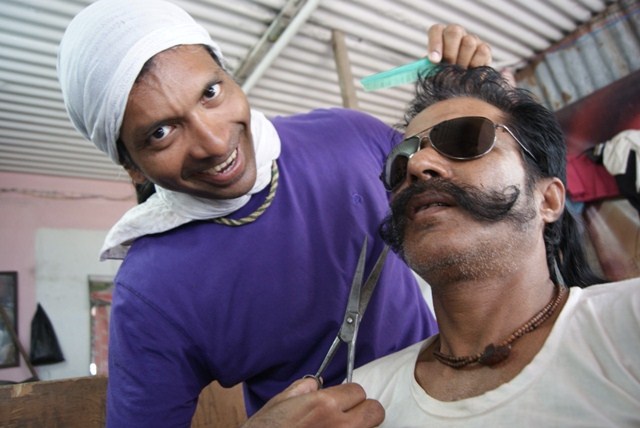
It is easy to be carried away by all the richness and diversity of the art and architecture of Nepal which has earned her the title ‘heritage country’. Honestly, I was getting a bit weary of it by now. But in a country with a landscape as varied as arid snow mountains to tropical jungles, with a multitude of ethnicities, limitless culinary spreads and a thriving tourist economy, the traveller is never at a loss for options.
Backpacking was more a lifestyle than a mode of travel during its early days. It started during the 60s with the hippie trail which was basically reliving and recreating parts of the journey along the ancient Silk Route. Periods of continued unrest in regions of Afghanistan, Iran and Iraq increased the allure of relatively peaceful havens like Nepal. The backpacker gladly set up base here which continues to flourish to this day in Thamel. However, it was in the Freak Street area that the first backpackers laid down their load. At that time, during the 70s, Thamel was actually removed from the town area – a place with fields and orchards, capering squirrels and chirpy birds. And an average-sized palace belonging to the Ranas – one of the ruling dynasties of Nepal. This was later converted to a heritage hotel and called the Kathmandu Guest House. Taking cue as the business picked up, others too opened hotels here as the other available areas had become congested by now.
The choc-a-bloc Kantipath is one of the busiest and historical roads of Kathmandu. Traffic flows in an organised cacophony. As with the rest of Kathmandu town, here too, pollution levels are on an all-time high. The happy smattering of active foreigners amidst locals was illustrative of Thamel which started right next to the road. Thamel was where trekkers and mountaineers congregated to hire guides, porters and other support staff. They also came here to celebrate a successful ascent or an eventful escape in any of the several bars that dot this touristy neighbourhood.
As with any other place that thrives on tourism, in Thamel too shops are aplenty peddling almost everything – from magazines and books to roadside art, from high-end trekking gear to eat-on-the-go. Hotels are not at all hard to find – there is one for every pocket. There are nationals from every part of the world who have come for every conceivable activity. From trekking and mountaineering to quieter pursuits like parikrama and pilgrimage, most of them use Thamel as the base. From here they take off on trips to the holy Mount Kailas or the Manasarovar Lake in Tibet or to closer destinations like the Pokhara Valley and the Chitwan National Park. Thamel also has, in the recent past, hogged limelight for the wrong reasons. According to a recent report by the BBC, the place was becoming a haven for drug dealers and criminals. There is, reportedly, a thriving trade in guns and small arms here. The report cited shopkeepers who claimed to have heard violent fights and gunshots in the neighbourhood. Small price to pay for the iconic popularity it enjoys.
My hunt for souvenirs took me into many of the numerous art shops lining the narrow Thamel lanes. Art in Nepal has a distinctive religious flavour about it. Most of the paintings in Nepal are vastly influenced by Indian and Chinese styles, in terms of colour and form. The preferred medium was the scroll painting for reasons of convenience – ease of transport. The two popular schools of paintings in Nepal are the thangka and Paubha. Though used almost synonymously, these are two distinct schools. The thangka paintings show deities with an amazing level of intricacy and attention to detail. Their postures are either tranquil or ferocious. To be a master in the art requires anywhere up to 15 years of training. While ‘Paubha’ is Newari for ‘Thangka’, the paintings are more vibrant and are used as story-telling devices. Both the schools of paintings thrive on the tourist trade and use folk art style to depict animals, deities and images of village life.


